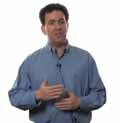JWST progress report
The James Webb Space Telescope (JWST) is a large, infrared-optimized space telescope. The project is working to a 2018 launch date. JWST will find the first galaxies that formed in the early universe, connecting the Big Bang to our own Milky Way galaxy. It will peer through dusty clouds to see stars forming planetary systems, connecting the Milky Way to our own Solar System.
JWST will study every phase in the history of our universe, ranging from the first luminous glows after the Big Bang, to the formation of solar systems capable of supporting life on planets like Earth, to the evolution of our own Solar System.
 Lee Feinberg (left) is the NASA Optical Telescope Element Manager for the James Webb Space Telescope at the Goddard Space Flight Center. He has overseen the production of three telescope technologies for JWST: lightweight mirrors, lightweight cryogenic structures, and wavefront sensing and control. Feinberg was co-chair for the Mirror Review Board that chose beryllium as the material for the JWST primary mirror.
Lee Feinberg (left) is the NASA Optical Telescope Element Manager for the James Webb Space Telescope at the Goddard Space Flight Center. He has overseen the production of three telescope technologies for JWST: lightweight mirrors, lightweight cryogenic structures, and wavefront sensing and control. Feinberg was co-chair for the Mirror Review Board that chose beryllium as the material for the JWST primary mirror.
Joe Howard (right) serves at the lead optical designer for the James Webb Space Telescope. Both he and Lee Feinberg are regular contributors to SPIE astronomy conferences, both at SPIE Optics + Photonics and at the biannual SPIE Astronomical Instrumentation symposium.

